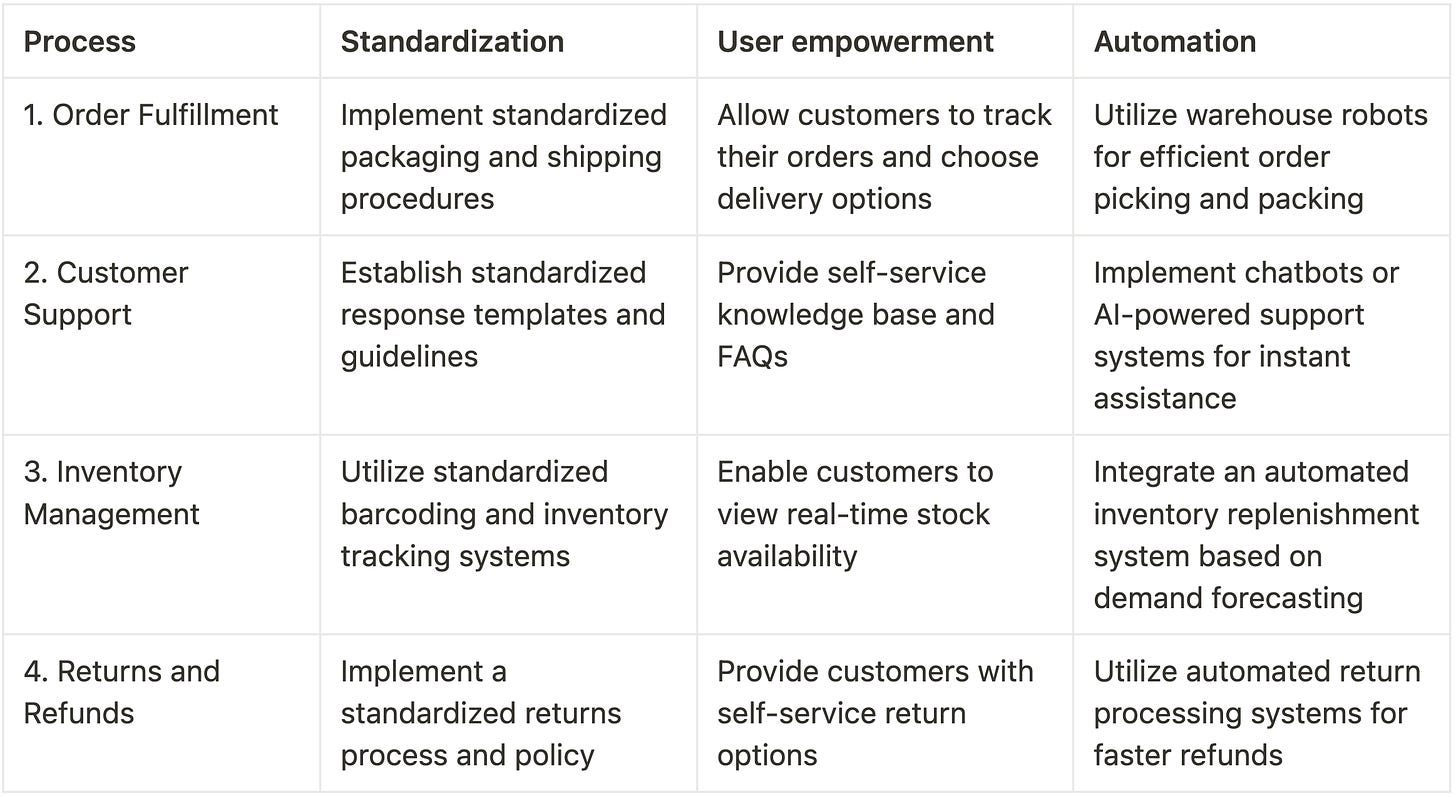
If you haven’t achieved product-market fit yet, first remember to do things that don’t scale. I recommend reading this fantastic article from Paul Graham that sets you in the startup mindset when looking for product-market fit.
In the early stages of a product, we focus on manually recruiting users, providing exceptional customer service, and creating a delightful user experience, even if it requires unscalable efforts. But when is it time to scale? Well, there is no definitive answer, but in short, success is obvious. You'll know it's time to scale when you struggle to meet the demands of your customers.
Now, into the 3 pillars that unlock scalability. In this specific order:
Standardization involves establishing norms and processes for each input and output of your product. By standardizing, you ensure repeatable and consistent results for your customers. A great example of standardization is McDonald’s. Regardless of which McDonald’s location you visit in the world, every Big Mac taste the same.

Empowering users means sharing tasks and responsibilities with your customers, enabling them to actively participate in the process. An excellent example of user empowerment is IKEA. At IKEA, customers are not only shoppers but also co-creators. They navigate through the warehouse, select their items, and assemble the furniture themselves. User empowerment not only reduces costs for the business but also fosters a sense of ownership for customers.

Automation is a key driver of scalability. By leveraging technology, organizations can automate repetitive tasks, saving time and reducing errors. One fascinating example of automation is Carvana, they revolutionized the car buying process by creating a fully automated car distribution system. Customers can browse and purchase vehicles online, and Carvana’s automated system retrieves and delivers the cars using a giant distributor.

The key when using this framework is to map it against your process flow. You can list each process item and think about how you can standardize, empower users, and automate.
To illustrate this, let's consider a hypothetical e-commerce company with 4 main processes:

This mapping exercise makes a great workshop activity. So, gather your team, roll up your sleeves, and embark on this fantastic scale journey starting with Post-it notes!